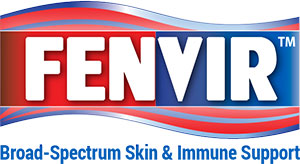Other Names: Emblica officinalis, Phyllanthus emblica, amalaki, Indian gooseberry
Amla, which is often referred to as Emblica officinalis, Phyllanthus emblica, amalaki, or Indian gooseberry, is one of the most celebrated herbs in traditional Indian supplements. Amla has strong antioxidant components that support the immune system’s ability to protect the body from foreign invaders.
Taking amla also may help:
- Enhance the absorption of food
- Support circulatory processes that optimize the body’s pH
- Promote biological processes that maintain good liver health
- Support natural defenses that protect cells from damage
- Enhance the body’s detoxification system
It is also highly nutritious and is filled with a number of essential vitamins and nutrients such as iron, carotene, chromium and fiber which afford the body with various health benefits. In addition to supplying highly-concentrated amino acids and minerals to the body, it is reputed to provide the highest content of vitamin C of any natural occurring substances in nature.
Studies on Amla:
- Majeed M, Bhat B, Anand S, Sivakumar A, Paliwal P, Geetha KG. Inhibition of UV-induced ROS and collagen damage by Phyllanthus emblica extract in normal human dermal fibroblasts. J Cosmet Sci. 2011 Jan-Feb;62(1):49-56.
- Fujii T, Wakaizumi M, Ikami T, Saito M. Amla (Emblica officinalis Gaertn.) extract promotes procollagen production and inhibits matrix metalloproteinase-1 in human skin fibroblasts. J Ethnopharmacol. 2008 Sep 2;119(1):53-7. doi: 10.1016/j.jep.2008.05.039. Epub 2008 Jun 6.
- Ramasundaram Thangaraj, Senniyanallur Rathakrishnan Ayyappan, Panneerselvam Manikandan, Jayaraman Baskaran. Antioxidant Property of Emblica officinalis during Experimentally Induced Restrain Stress in Rats. Journal of Health Science, Vol. 53 (2007) No. 4 P 496-499.
- Mushtaq D. Adila, Peerzada Kaisera, Naresh K. Sattia, Afzal M. Zargarb, Ram A. Vishwakarmaa, Sheikh A. Tasduqa. Effect of Emblica officinalis (fruit) against UVB-induced photo-aging in human skin fibroblasts. Journal of Ethnopharmacology; Volume 132, Issue 1, 28 October 2010, Pages 109–114.
Other research:
- Chatterjee UR, Bandyopadhyay SS, Ghosh D, Ghosal PK, Ray B. In vitro anti-oxidant activity, fluorescence quenching study and structural features of carbohydrate polymers from Phyllanthus emblica. Int J Biol Macromol. 2011 Nov 1;49(4):637-42. doi: 10.1016/j.ijbiomac.2011.06.024. Epub 2011 Jun 30.
- Jindal A, Soyal D, Sharma A, Goyal PK. Protective effect of an extract of Emblica officinalis against radiation-induced damage in mice. Integr Cancer Ther. 2009 Mar;8(1):98-105. doi: 10.1177/1534735409331455.
- Sarkar R, Hazra B, Mandal N. Amelioration of iron overload-induced liver toxicity by a potent antioxidant and iron chelator, Emblica officinalis Gaertn. Toxicol Ind Health. 2013 Mar 22. [Epub ahead of print]
- Sultana S, Ahmad S, Khan N, Jahangir T. Effect of Emblica officinalis (Gaertn) on CCl4 induced hepatic toxicity and DNA synthesis in Wistar rats. Indian J Exp Biol. 2005 May;43(5):430-6.
- Yang B, Liu P. Composition and biological activities of hydrolyzable tannins of fruits of Phyllanthus emblica. J Agric Food Chem. 2014 Jan 22;62(3):529-41. doi: 10.1021/jf404703k. Epub 2014 Jan 9.
- Kumar A, Singh K. Isolation of high quality RNA from Phyllanthus emblica and its evaluation by downstream applications. Mol Biotechnol. 2012 Nov;52(3):269-75. doi: 10.1007/s12033-011-9492-5.
- Verma R, Chakraborty D. Alterations in DNA, RNA and protein contents in liver and kidney of mice treated with ochratoxin and their amelioration by Emblica officinalis aqueous extract. Acta Pol Pharm. 2008 Jan-Feb;65(1):3-9.
- Hari Kumar KB, Sabu MC, Lima PS, Kuttan R. Modulation of haematopoetic system and antioxidant enzymes by Emblica officinalis gaertn and its protective role against gamma-radiation induced damages in mice. J Radiat Res. 2004 Dec;45(4):549-55.
- Zhong ZG, Luo XF, Huang JL, Cui W, Huang D, Feng YQ, Li CP, Li ML, Huang ZQ. [Study on the effect of extracts from the leaves of Phyllanthus emblica on immune function of mice]. [Article in Chinese] Zhong Yao Cai. 2013 Mar;36(3):441-4.
- Singh MK, Yadav SS, Yadav RS, Singh US, Shukla Y, Pant KK, Khattri S. Efficacy of crude extract of Emblica officinalis (amla) in arsenic-induced oxidative damage and apoptosis in splenocytes of mice. Toxicol Int. 2014 Jan;21(1):8-17. doi: 10.4103/0971-6580.128784.
- Singh MK, Yadav SS, Gupta V, Khattri S. Immunomodulatory role of Emblica officinalis in arsenic induced oxidative damage and apoptosis in thymocytes of mice. BMC Complement Altern Med. 2013 Jul 27;13:193. doi: 10.1186/1472-6882-13-193.
- Belapurkar P, Goyal P, Tiwari-Barua P. Immunomodulatory effects of triphala and its individual constituents: a review. Indian J Pharm Sci. 2014 Nov-Dec;76(6):467-75.
- Naik GH, Priyadarsini KI, Bhagirathi RG, Mishra B, Mishra KP, Banavalikar MM, Mohan H. In vitro antioxidant studies and free radical reactions of triphala, an ayurvedic formulation and its constituents. Phytother Res. 2005 Jul;19(7):582-6.
- Majeed M, Bhat B, Anand S, Sivakumar A, Paliwal P, Geetha KG. Inhibition of UV-induced ROS and collagen damage by Phyllanthus emblica extract in normal human dermal fibroblasts. J Cosmet Sci. 2011 Jan-Feb;62(1):49-56.
- Adil MD, Kaiser P, Satti NK, Zargar AM, Vishwakarma RA, Tasduq SA. Effect of Emblica officinalis (fruit) against UVB-induced photo-aging in human skin fibroblasts. J Ethnopharmacol. 2010 Oct 28;132(1):109-14. doi: 10.1016/j.jep.2010.07.047. Epub 2010 Aug 3.
- Chaudhuri RK. Emblica cascading antioxidant: a novel natural skin care ingredient. Skin Pharmacol Appl Skin Physiol. 2002 Sep-Oct;15(5):374-80.
These statements have not been evaluated by the FDA. This product is not intended to prevent, treat, cure, or diagnose any disease. Information on this site is for educational purposes only. It is not medical advice. Consult a physician if you are seeking medical advice or have a medical problem.

